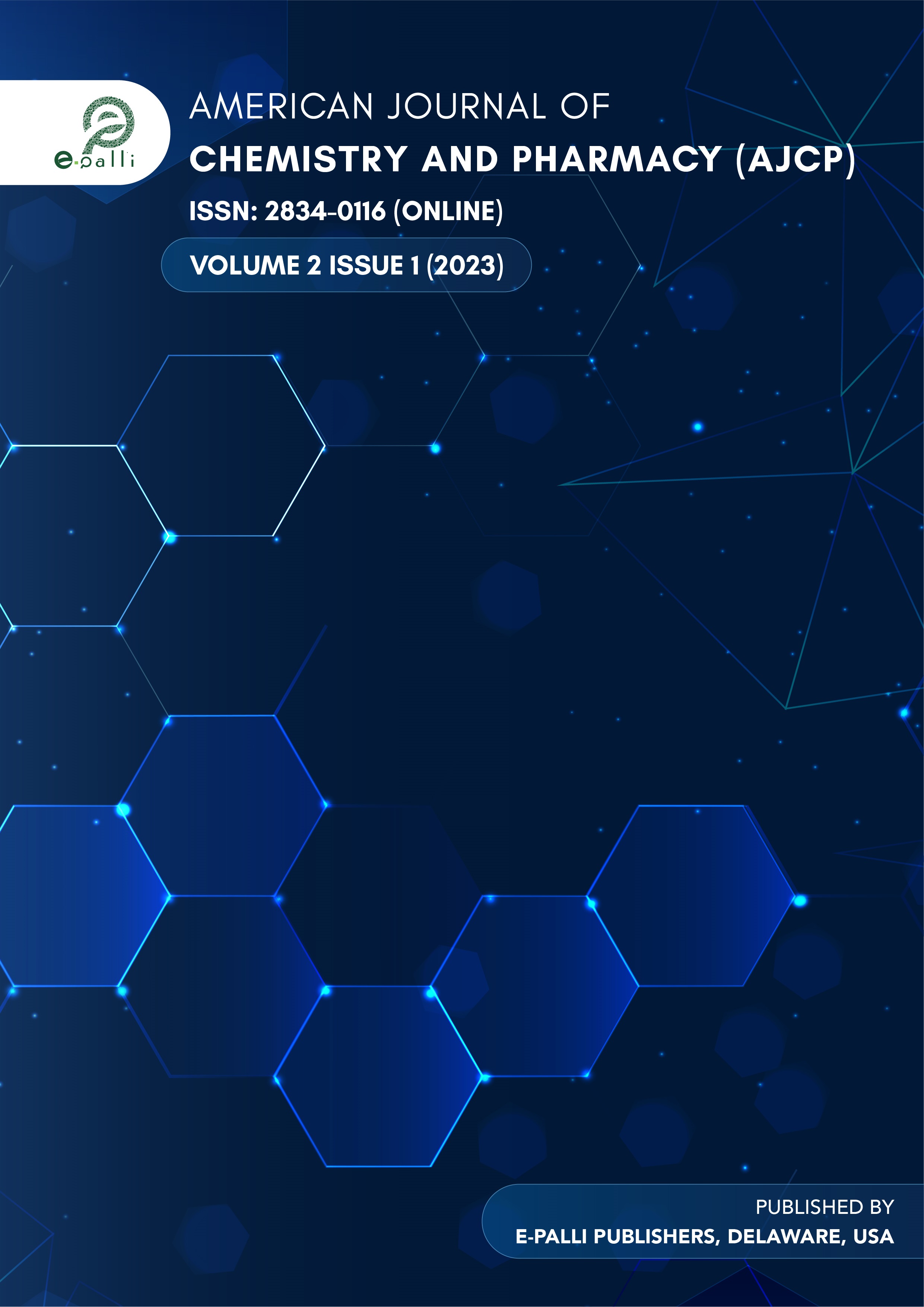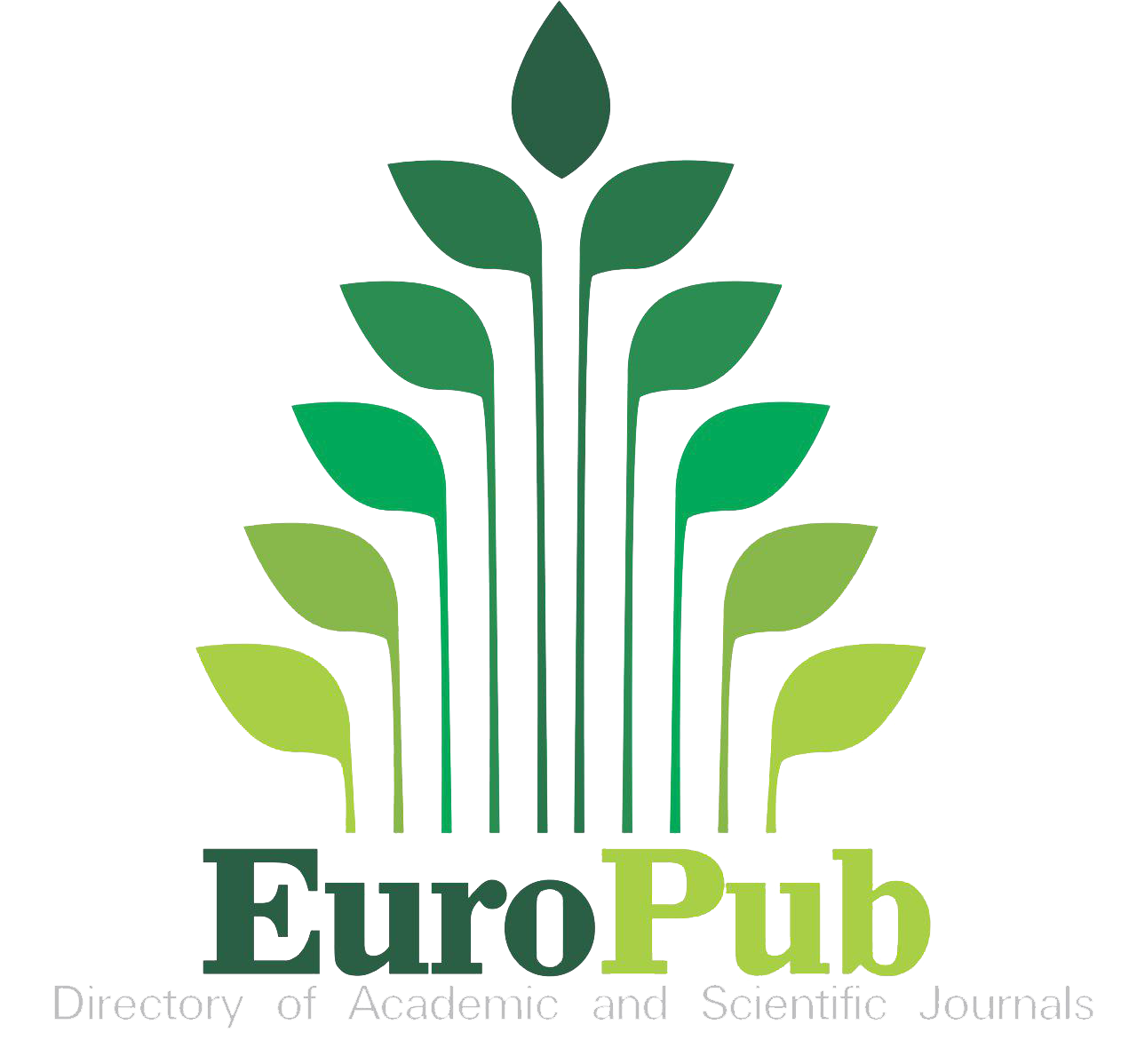Synthesis and Characterization of Alpinia calcarata Loaded Nanoparticles to Control Hyperglycemia
DOI:
https://doi.org/10.54536/ajcp.v2i1.1293Keywords:
A.calcarata, Antidiabetic, BSA Nanoparticles, Citric Acid, NutraceuticalAbstract
Bovine Serum Albumin (BSA) nanoparticles loaded with the bioactive compounds of A. calcarata, which is known to exert its antidiabetic activity through the inhibition of pancreatic enzymes, are a good form of an antidiabetic nutraceutical as they have reduced side effects, protection of active compounds from environmental agents, specific delivery to target sites and prolonged shelf-life. The objective of the present study was to synthesize and characterize A. calcarata loaded nanoparticles (ALNP) to be used as a powder form nutraceutical with higher antidiabetic activity. In this study an aqueous A. calcarata extract (4.00 mL) was added to BSA (20 mg/mL, 4.00 mL, pH 9) in the presence of citric acid as the cross-linking agent. The ALNP gave an IC50 value of 147 µg/mL, a glucose (5 mM) uptake percentage of 73.09% at a 0.5 mg/mL concentration, a solubility value of 64%, A. calcarata loading percentage of 6.66% and A. calcarata entrapment efficiency of 87.71%. They had a spherical morphology and uniform size with a particle size of 1030.70 nm, PDI of 0.199 and a zeta potential of 2.57 mV. The UV-Visible absorbance spectra and FT-IR spectra showed that citric acid had caused conformational changes in the protein structure of BSA and that the active compounds were successfully loaded into the synthesized nanoparticles which interacted with the protein matrix via covalent bonds. Therefore, it can be concluded that the synthesized nanoparticles have an antidiabetic effect and the antidiabetic activity of bioactive compounds of the aqueous A. calcarata extract become enhanced when loaded onto the nanocarriers.
Downloads
References
Amighi, F., Emam-Djomeh, Z., & Labbafi-Mazraeh-Shahi, M. (2020). Effect of different cross-linking agents on the preparation of bovine serum albumin nanoparticles. Journal of the Iranian Chemical Society, 17(5), 1223–1235. https://doi.org/10.1007/s13738-019-01850-9
Aniesrani Delfiya, D. S., Thangavel, K., & Amirtham, D. (2016). Preparation of Curcumin Loaded Egg Albumin Nanoparticles Using Acetone and Optimization of Desolvation Process. The Protein Journal, 35(2), 124–135. https://doi.org/10.1007/s10930-016-9652-3
Arambewela, L. S. R., Kumaratunge, A., Arawwawela, M., Owen, N. L., & Du, L. (2005). Volatile Oils of Alpinia calcarata Rosc. Grown in Sri Lanka. Journal of Essential Oil Research, 17(2), 124–125. https://doi.org/10.1080/10412905.2005.9698850
Assadpour, E., & Mahdi Jafari, S. (2019). A systematic review on nanoencapsulation of food bioactive ingredients and nutraceuticals by various nanocarriers. Critical Reviews in Food Science and Nutrition, 59(19), 3129–3151. https://doi.org/10.1080/10408398.2018.1484687
Assadpour, E., & Mahdi Jafari, S. (2019). A systematic review on nanoencapsulation of food bioactive ingredients and nutraceuticals by various nanocarriers. Critical Reviews in Food Science and Nutrition, 59(19), 3129–3151. https://doi.org/10.1080/10408398.2018.1484687
Attieh, H. A., Abu Lafi, S., Jaber, S., Abu-Remeleh, Q., Lutgen, P., & Akkawi, M. (2015). Cinnamon bark water-infusion as an in-vitro inhibitor of β-hematin formation. https://dspace.alquds.edu/handle/20.500.12213/1023
Bhutkar, M. A., Bhinge, S. D., Randive, D. S., & Wadkar, G. H. (2017). Hypoglycemic effects of Berberis aristata and Tamarindus indica extracts in vitro. Bulletin of Faculty of Pharmacy, Cairo University, 55(1), 91–94. https://doi.org/10.1016/j.bfopcu.2016.09.001
Cirillo, V. P. (1962). Mechanism of glucose transport across the yeast cell membrane. Journal of Bacteriology, 84(3), 485–491. https://www.ncbi.nlm.nih.gov/pmc/articles/PMC277903/
Clogston, J. D., & Patri, A. K. (2011). Zeta potential measurement. Methods in Molecular Biology (Clifton, N.J.), 697, 63–70. https://doi.org/10.1007/978-1-60327-198-1_6
Danaei, M., Dehghankhold, M., Ataei, S., Hasanzadeh Davarani, F., Javanmard, R., Dokhani, A., Khorasani, S., & Mozafari, M. R. (2018). Impact of Particle Size and Polydispersity Index on the Clinical Applications of Lipidic Nanocarrier Systems. Pharmaceutics, 10(2), 57. https://doi.org/10.3390/pharmaceutics10020057
Fourier Transform Infrared Spectroscopy (FTIR) Spectral Analysis of BSA Nanoparticles (BSA NPs) and Egg Albumin Nanoparticles (EA NPs). (2016). Research Journal of Chemical Sciences, 6(2), 29–36. http://www.isca.in/rjcs/Archives/v6/i2/5.ISCA-RJCS-2016-006.php
Guthrie, R. A., & Guthrie, D. W. (2004). Pathophysiology of diabetes mellitus. Critical Care Nursing Quarterly, 27(2), 113–125. https://doi.org/10.1097/00002727-200404000-00003
Hanadi, A. A., Saleh, A. L., Suhair, J., Qassem, A. R., Pierre, L., & Mutaz, A. (2015). Cinnamon bark water-infusion as an in-vitro inhibitor of -hematin formation. Journal of Medicinal Plants Research, 9(38), 998–1005. https://doi.org/10.5897/JMPR2015.5931
Jayawardena, B., & Smith, R. M. (2010). Superheated water extraction of essential oils from Cinnamomum zeylanicum (L.). Phytochemical Analysis: PCA, 21(5), 470–472. https://doi.org/10.1002/pca.1221
Kazeem, M. I., & Davies, T. C. (2016). Anti-diabetic functional foods as sources of insulin secreting, insulin sensitizing and insulin mimetic agents. Journal of Functional Foods, 20, 122–138. https://doi.org/10.1016/j.jff.2015.10.013
Kerner, W., Brückel, J., & German Diabetes Association. (2014). Definition, classification and diagnosis of diabetes mellitus. Experimental and Clinical Endocrinology & Diabetes: Official Journal, German Society of Endocrinology German Diabetes Association, 122(7), 384–386. https://doi.org/10.1055/s-0034-1366278
Kharroubi, A. T., & Darwish, H. M. (2015). Diabetes mellitus: The epidemic of the century. World Journal of Diabetes, 6(6), 850–867. https://doi.org/10.4239/wjd.v6.i6.850
Niknejad, H., & Mahmoudzadeh, R. (2015). Comparison of Different Crosslinking Methods for Preparation of Docetaxel-loaded Albumin Nanoparticles. Iranian Journal of Pharmaceutical Research : IJPR, 14(2), 385–394. https://www.ncbi.nlm.nih.gov/pmc/articles/PMC4403054/
Oyedemi, S. O., Oyedemi, B. O., Ijeh, I. I., Ohanyerem, P. E., Coopoosamy, R. M., & Aiyegoro, O. A. (2017). Alpha-Amylase Inhibition and Antioxidative Capacity of Some Antidiabetic Plants Used by the Traditional Healers in Southeastern Nigeria. The Scientific World Journal, 2017, 3592491. https://doi.org/10.1155/2017/3592491
Paolino, D., Mancuso, A., Cristiano, M. C., Froiio, F., Lammari, N., Celia, C., & Fresta, M. (2021). Nanonutraceuticals: The New Frontier of Supplementary Food. Nanomaterials (Basel, Switzerland), 11(3), 792. https://doi.org/10.3390/nano11030792
Rahman, M. A., & Islam, M. S. (2015). Alpinia calcarata Roscoe: A potential phytopharmacological source of natural medicine. Pharmacognosy Reviews, 9(17), 55–62. https://doi.org/10.4103/0973-7847.156350
Rahman, M. A., & Islam, M. S. (2015). Alpinia calcarata Roscoe: A potential phytopharmacological source of natural medicine. Pharmacognosy Reviews, 9(17), 55–62. https://doi.org/10.4103/0973-7847.156350
Ranasinghe, P., Pigera, S., Premakumara, G. A. S., Galappaththy, P., Constantine, G. R., & Katulanda, P. (2013). Medicinal properties of “true” cinnamon (Cinnamomum zeylanicum): A systematic review. BMC Complementary and Alternative Medicine, 13, 275. https://doi.org/10.1186/1472-6882-13-275
Rehman, G., Hamayun, M., Iqbal, A., Ul Islam, S., Arshad, S., Zaman, K., Ahmad, A., Shehzad, A., Hussain, A., & Lee, I. (2018). In Vitro Antidiabetic Effects and Antioxidant Potential of Cassia nemophila Pods. BioMed Research International, 2018, e1824790. https://doi.org/10.1155/2018/1824790
Samarasinghe, B., Kaliyadasa, E., & Marasinghe, P. (2020). Physicochemical Properties and Bioactivities of Six Alpinia Species in Sri Lanka. International Journal of Ayurvedic Medicine, 11(4). https://doi.org/10.47552/ijam.v11i4.1717
Sapra, A., & Bhandari, P. (2022). Diabetes Mellitus. In StatPearls. StatPearls Publishing. http://www.ncbi.nlm.nih.gov/books/NBK551501/
Teo, C. C., Tan, S. N., Yong, J. W. H., Hew, C. S., & Ong, E. S. (2010). Pressurized hot water extraction (PHWE). Journal of Chromatography A, 1217(16), 2484–2494. https://doi.org/10.1016/j.chroma.2009.12.050
Verma, D., Gulati, N., Kaul, S., Mukherjee, S., & Nagaich, U. (2018). Protein Based Nanostructures for Drug Delivery. Journal of Pharmaceutics, 2018, 9285854. https://doi.org/10.1155/2018/9285854
Wariyapperuma, W. A. N. M., Kannangara, S., Wijayasinghe, Y., Subramanium, S., & Jayawardena, B. (2018). Pressured water extraction and solvent extraction of Cinnamomum zeylanicum (L.) bark and evaluation of anti-diabetic properties.
Wasana, K. G. P., Attanayake, A. P., Jayatilaka, K. A. P. W., & Weerarathna, T. P. (2021). Antidiabetic Activity of Widely Used Medicinal Plants in the Sri Lankan Traditional Healthcare System: New Insight to Medicinal Flora in Sri Lanka. Evidence-Based Complementary and Alternative Medicine, 2021, e6644004. https://doi.org/10.1155/2021/6644004
Xu, H., Shen, L., Xu, L., & Yang, Y. (2015). Controlled delivery of hollow corn protein nanoparticles via non-toxic crosslinking: In vivo and drug loading study. Biomedical Microdevices, 17(1), 8. https://doi.org/10.1007/s10544-014-9926-5
Downloads
Published
How to Cite
Issue
Section
License
Copyright (c) 2023 B.S. Wanniarachchi, P.G.U. Chathuranga, P.H.U.W. De Silva, B.M. Jayawardena

This work is licensed under a Creative Commons Attribution 4.0 International License.







